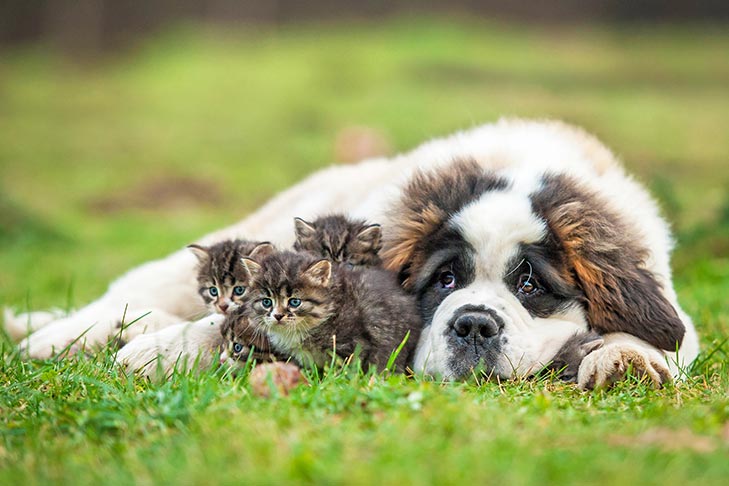
Why dogs don’t like cats
Action of instincts
Dogs have a highly developed hunting instinct, which encourages them to attack smaller animals – especially if they run away. Cats, on the other hand, are guided by the instinct of self-preservation: they try to get away at the sight of a larger predator and that is why they often become victims. The owner of the dog can help him control his hunting impulses, but this will require a long and consistent training.
Communication signals
Dogs and cats “speak different languages”. They have diametrically different communication signals:
- tail movements from side to side mean friendliness in dogs, and irritation in cats;
- bending to the ground and flattened ears in dogs means humility, and in cats – readiness to attack;
- a raised paw means that the dog wants to play, and the cat is aggressive.
For example, a dog may wag its tail to show a desire to play along, while a cat reads this as a sign of annoyance. Submissive posture in dogs can also be misinterpreted as aggression. If a cat twitches its tail in annoyance, this may seem like a positive signal to the dog. He runs closer with the best of intentions, but unexpectedly gets clawed in the face.
Personal space
Dogs are pack animals by nature: close communication with relatives, sniffing, exchanging communicative signals and building a hierarchy are quite natural for them. Cats, on the contrary, prefer to live and hunt alone, and they perceive encroachment on their territory as a challenge. This often becomes a cause of conflict if the dog and cat are forced to live in the same house. The first constantly violates the personal space of the second, and he stubbornly defends his independence.
Negative experience
Even if the dog behaves perfectly, adult cats and cats may be the first to show aggression. The reason for this is a traumatic experience in the past, associated with the attack of other dogs. After such situations, the cat is unlikely to immediately be imbued with trust in a new pet.
Knowing why dogs bark at cats and cats hiss at dogs can teach them to coexist without conflict. For example, if a cat and a dog live together from an early age, they learn to properly understand each other’s signals – especially if people encourage friendly behavior and stop aggression. This works best if the puppy is no more than a year old, and the kitten is no more than 6 months old. But even adult dogs can really make friends with kittens.
If the owner is trying to build relationships between adult animals, he will need a lot of patience and perhaps the help of a professional dog handler. To learn more about how these pets differ and which breeds of dogs are considered the friendliest to purrs, you can study the materials at the link.
See also:
- Dogs or cats: who is smarter?
- Cat or Dog: Which Pet to Get?
- History of the expression “fight like cat and dog”





